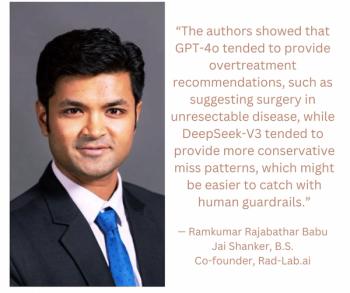
Expediting the Management of Incidental Pulmonary Emboli on CT
In a recent video interview from the Society for Imaging Informatics in Medicine (SIIM) conference, Ali Tejani, M.D., discussed pertinent insights on leveraging the value of adjunctive artificial intelligence (AI)-enabled triage software for computed tomography (CT) scans with radiology workflow improvements to achieve “clinically meaningful change” for patients with incidental pulmonary emboli findings.
For incidental pulmonary emboli (PE) findings on outpatient computed tomography (CT) scans, timely follow-up remains challenging due to daunting radiology worklists and potential health equity considerations, such as transportation access and language barriers, in high-risk populations.
However, in emerging pilot study research presented at the Society for Imaging Informatics in Medicine (SIIM) conference, Ali Tejani, M.D. discussed the implementation of an artificial intelligence (AI)-guided triage software for managing incidental PE findings on computed tomography (CT) scans.
Dr. Tejani and colleagues had impressive results with an approximately one-hour improvement in the median time to emergency department presentation and over a 13-hour difference in the median time to anticoagulant prescription retrieval.
(Editor’s note: For related content, see “
However, Dr. Tejani emphasized that these results wouldn’t have been possible without multidisciplinary collaboration in addressing previously existing challenges in the radiology workflow, including health equity considerations, that affect the quality of care. In collaboration with CT technologists, Dr. Tejani said they established a workflow requirement that patients with outpatient chest CT studies remain at the facility during AI assessment of the imaging.
The combination of workflow changes with AI-enabled worklist reprioritization for radiologists led to more timely follow-up care for patients with incidental PE findings on CT scans, according to Dr. Tejani, a third-year radiology resident at the University of Texas Southwestern Medical Center.
“By instituting a clinical operations initiative that helps you leverage an AI result, (it) can actually translate to this clinically meaningful change,” noted Dr. Tejani.
For more insights from Dr. Tejani, watch the video below.
Newsletter
Stay at the forefront of radiology with the Diagnostic Imaging newsletter, delivering the latest news, clinical insights, and imaging advancements for today’s radiologists.




























